
In the outskirts of the Bavarian town of Garching, the chapel in Simetsbichl is a whitewashed building with a gabled roof. Benches are lined up inside, where an aureoled Virgin Mary gazes from the apse to an altar with candles, flowers and guest books brimming with personal pleas: for healing, for a new job, to get pregnant. And then, on a yellow notepad in a child’s scrawly handwriting:
“The sexual harassment should stop – Yours, Stefan”
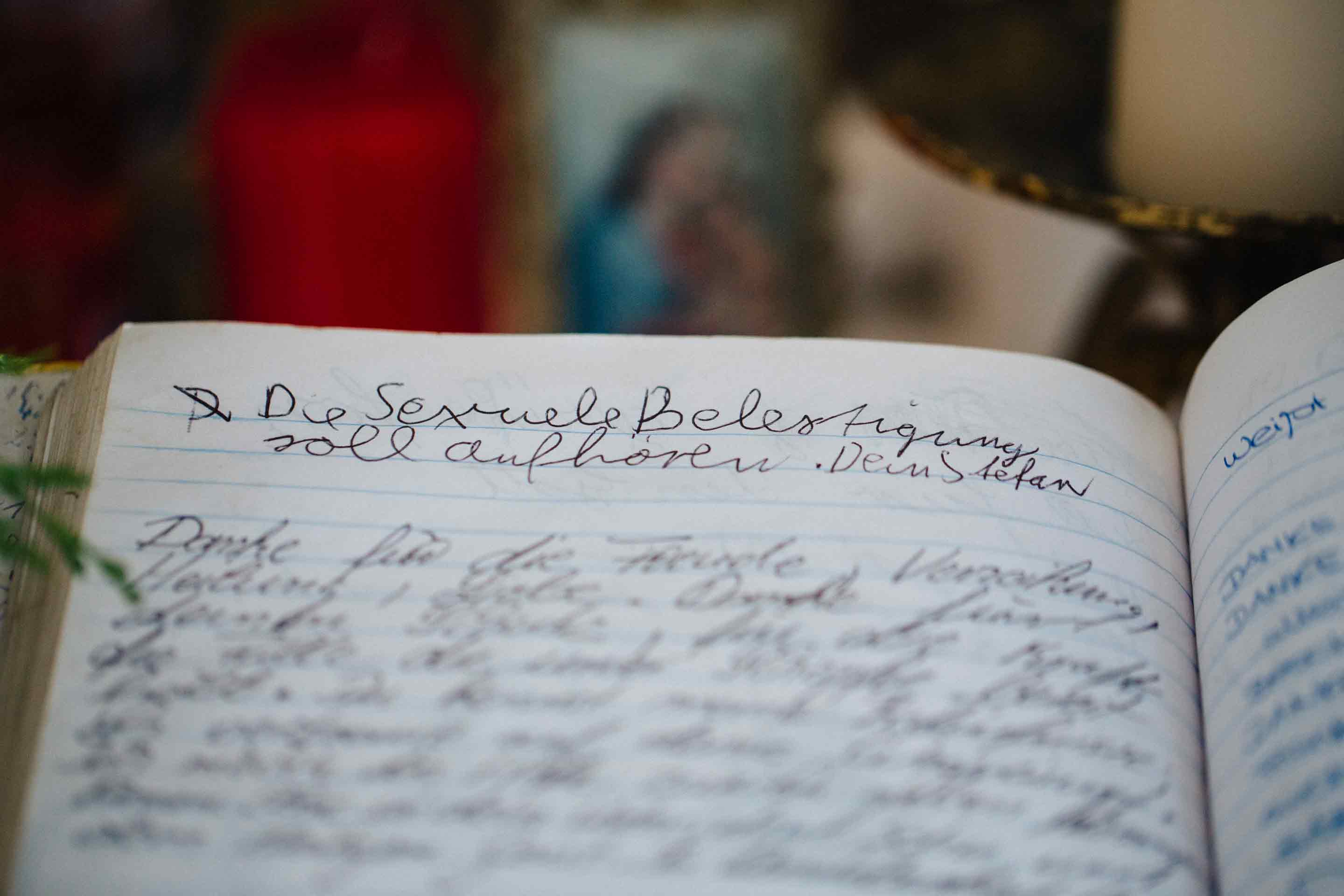
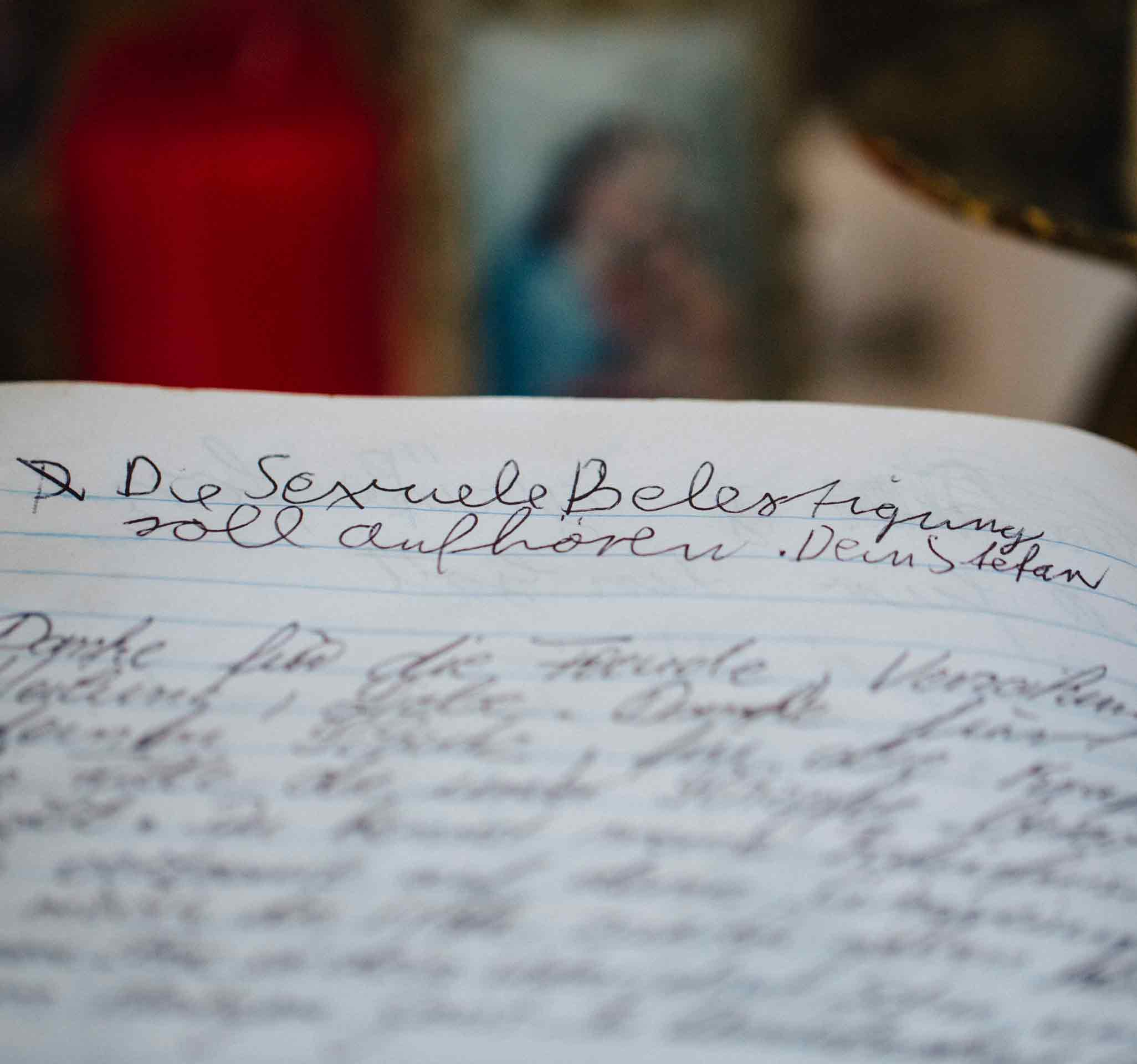
There is no date above the entry, so it is impossible to determine when the boy wrote his appeal to the Blessed Mother. Some requests in the books go as far back as the 1990s, but it is also possible to write at the back of an empty book. Maybe the boy wanted to hide his petition behind blank pages until newer prayers could catch up over time.
Today, Stefan’s note points to a time when Priest Peter H., one of the most widely known perpetrators of sexual abuse in the German Catholic Church, led the parish in Garching. Until 2008, the priest also lived and worked just 30 minutes away by foot at the Church of St. Nicholas in Garching. For decades, he abused minor boys at both congregations. In response, the Church simply moved him from parish to parish, allowing his behavior to continue.
In Garching and in Engelsberg, in Essen and in Bottrop, a new investigation by CORRECTIV and Frontal21 reveals how Priest Peter H. abused young boys at congregations throughout Germany.
»Cool boys«
The case of Peter H. symbolizes the attempts of the church to cover up. To protect the abusers. To maintain silence up to the highest rankings of the Catholic Church. Including Pope Emeritus Benedict XVI.
In earlier investigations, the New York Times had already made a connection between the then-incumbent Pope and Priest Peter H. But this was already known to the Church. In a 2012 letter to the influential Cardinal Reinhard Marx, a copy of which was obtained by CORRECTIV, bishops stated their concern about Benedict XVI’s ties to the pedophilic priest.
CORRECTIV and Frontal21 revisited the case in recent months. Through interviewing witnesses and evaluating documents, we found that that the number of children who were abused could be significantly higher than previously acknowledged by the Church. We found that the connections between the Peter H. and Cardinal Ratzinger, who would later be appointed Pope, were greater than the Church and its representatives have admitted to date. For years, a close confidant of Ratzinger was in charge of a parish alongside the priest, never preventing him from surrounding himself with altar boys, fully aware of the risk. Church leadership was also complicit. In 2000, Peter H. bragged that Ratzinger had been standing at his door. Something that Ratzinger now denies.
Today, Peter H. lives in a multi-story building in Munich alongside families with young children. A playground can be seen from his window. CORRECTIV and Frontal21 tried to speak with H. several times to ask about what happened and offer the opportunity to explain his position as new information emerged. But all letters placed inside H.’s mailbox since November 2019 have remained unanswered. To date, H. has declined to comment on new accusations.
However, documents available to CORRECTIV and Frontal21 show glimpses of what H. himself thought about his actions. The priest has been accused of sexual abuse in multiple places over several years. When asked about the allegations during internal questioning by the Church, he admitted that he is a “pedophile priest”, adding that the “entire world” knew. But then he curtailed the fact by saying that he was never violent, never penetrated the boys and never engaged in oral sex. There was only one exception. He downplayed situations that can no longer be denied and alleged that, in many cases, he was framed. He also blamed the spirit of the times: Dealing with sexuality was more relaxed. The kids talked so openly about sex, and they were “gorgeous boys”. This is how he justified himself, according to documents from the Essen diocese. In short: He claimed he was seduced.
Priest H. said the young boys’ open approach to sexuality gave him the idea in the first place and that the time he spent as a clergyman should not be downgraded only because of acts of abuse. He said he did a lot of good. And the Church let him work even though his tendencies were known. It protected him and showed him understanding and did not punish him, because such acts were assessed differently back then. He also said it is not possible for the Church to punish him now, so suddenly, because people think about things differently today – even if his acts were barred by the statute of limitations. CORRECTIV wrote several letters to H. and asked him for an interview. But H. has not responded to date.
The »Pied Piper«
Priest H. became popular with the congregation soon after he started serving the parish of Garching in 1987. Beside Garching, he was also responsible for leading the onion-dome church situated in Engelsberg, a picturesque Bavarian village nearby. He was considered energetic and was popular among the youth. People even said that women had fallen for him.


“I can only say good things about H., such a friendly man,” said a secretary who worked at a school where the priest had taught religious education. Others in the village said he was a good preacher, more of an actor than a priest. A “pied piper”. He always ensured that the church was full of people. The congregation adored him.
People who attended the church said that there was a contest among altar boys to determine who was the clergyman’s favorite. He gave the altar boys alcohol and cigarettes. He was committed to the part, going on stage as a carnival comedian and organizing processions. “He approached people, was easy going, so you simply had to like him,” said 71-year-old Rosemarie Anwander, who has deep roots in Garching. She was involved in the parish and contributed to the local village newspaper.
But then something shattered the peace.
July 24, 1994. A parish festival is in the works. But early in the morning, parish councilor Klaus Mittermeier, a committed Christian who is “enthusiastic about priest H.”, received an alert. On the fairground in front of the community center and on the wall of the rectory, someone scrawled accusations against Priest H. alleging sexual abuse. The exact wording can no longer be reconstructed today. Memories vary too much: from a ribald sentence to declaring that Priest H. loved one of the parish youth. Mr. Mittermeier only remembers that one boy approached him and said he couldn’t be implicated because he had a girlfriend. “But I had other worries at the time, the parish festival,” said Mr. Mittermeier. That is the reason he for addressing the allegations. The writing on the wall was quickly painted over, the writing on the floor covered with cement and a carpet. But suspicion arose and rumors spread.

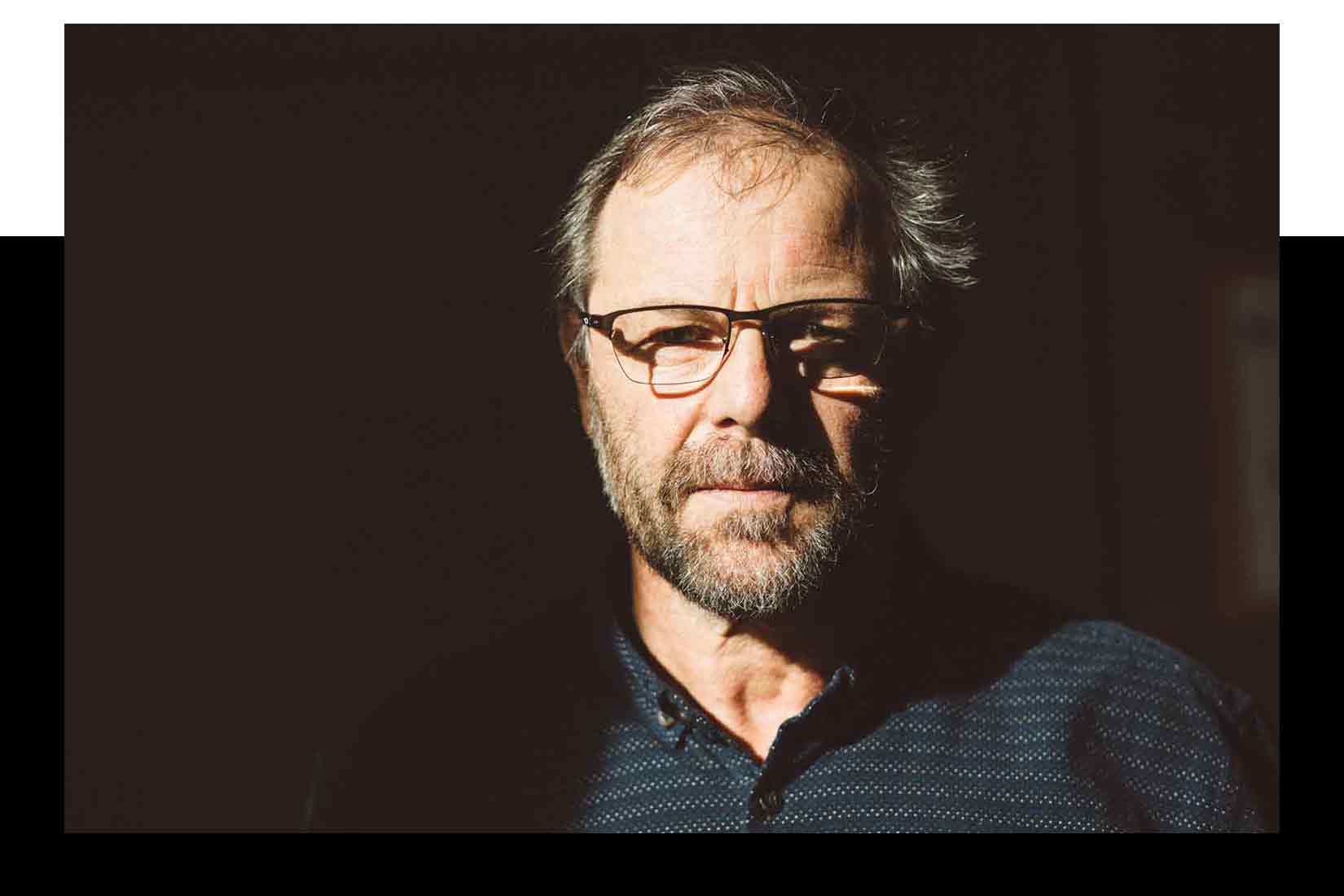
Summer vacation began shortly afterwards. Priest H. called on parish councilor Mittermeier. He said that he saw himself as a victim and complained about his suffering. He said he would leave the parish if the rumors did not stop. Mr. Mittermeier wanted to help him but demanded clarity: He asked H. whether any aspect of the rumors was true. If so, they would find a way to solve the problem. If not, he and the congregation would defend the clergyman and “fight things through”.
“We were friends,” said Mr. Mittermeier, adding that at the time he was “enthusiastic about his way of preaching”. Priest H. denied everything and said that the rumors had no grounding.
The parish councilor and the priest agreed to fight the rumors. A handwritten speech from the time shows their strategy: “Refute the truth contained in the rumors”. Priest H. gave sermons in Garching and Engelsberg. He furiously rejected the allegations. If conversation between priest and believer are suspicious, then pastoral care is not possible; this is what members of the congregation recall about the angry sermon. He read it to every church in the parish and was met by applause, recalls Mr. Mittermeier. In support of the priest’s campaign, the councilor also printed posters with a warning: “Bad words kill souls”.
Despite their efforts, Mrs. Anwander, a former community worker, says that people knew something had happened in Essen, a previous station in H.’s career. She says that her daughters were also altar girls for Priest H. and although many were aware that he was going to therapy in Munich, “most believed because of issues with alcohol.”
She added: “The main thing: he was nice”.

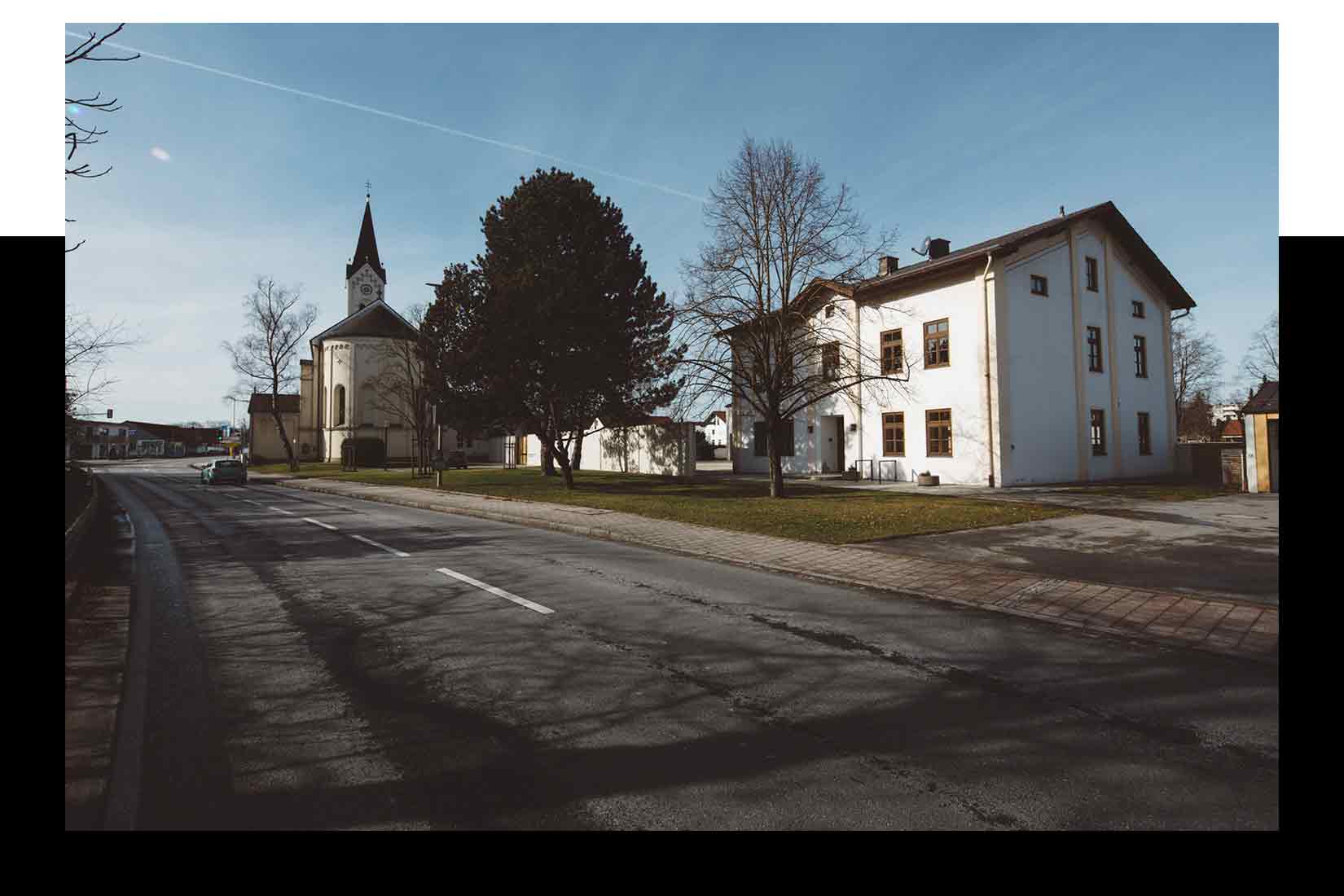
At the time, the congregation did not know that Priest H. was being watched by the Church – or that he was a convicted sex offender. After being transferred from Essen to Bavaria in the early 1980s, the Church ordered him to undergo psychological treatment. “H. was not capable of individual therapy due to his personality structure, only group therapy was possible”, describes Dr. Huth, adding that H. “considered himself a victim, above all”.
Today, Werner Huth is 90 years old. He spoke with the New York Times and the Süddeutschen Zeitung about H. in 2010. His intention was to give no more interviews on the matter, but he said that new investigations motivated him to speak up. Dr. Huth, with whom H. attended therapy sessions, alerted Church leadership at the time and, according his statement, informed Auxiliary Bishop Heinrich von Soden-Fraunhofen that the priest was dangerous.
A few years later, in 1984, an official court case was brought against H. for the first time. It was filed by parents in the Bavarian town of Grafing. Accordingly, the prosecutor’s office investigated H.’s sexual abuse of 12 boys in just one year, which the spokesman of the diocese confirms today. According to his own statement, H. explained the situation to Auxiliary Bishop von Soden-Fraunhofen. The Church reacted: during the investigation, the priest was briefly transferred to administrative tasks and then to Caritas, a Catholic organisation for relief and social work.
Dr. Huth established three rules for H. during therapy: First, he was not allowed to work with boys. Second, he was not allowed to drink alcohol. Third, he must be under supervision. “It didn’t require any medical expertise to do this,” said Dr. Huth. They are the usual precautionary measures, something that goes without saying. Dr. Huth still practices in Munich. But H. obviously did not follow those rules, and a court in Ebersberg sentenced him to 18 months’ probation and a fine. With that, the state considered matters closed.
Then, despite the psychiatrist’s warning, the Church reassigned H. to parish work and transferred him to Garching. The congregation knew nothing about the clergyman’s criminal past. And again, H. was surrounded by children.
After the move, the diocese in Munich got word of new accusations against H. in Garching. In response to a request from CORRECTIV and Frontal21, a spokesman for the Munich-Freising diocese wrote that in 1993, it was recorded that “H. kissed children on the forehead when celebrating their first communion and that an older teenager is a regular visitor at the rectory.” H. denied the kissing. He said it was “a symbolic act without direct physical contact”. As for the visitor, he said that he “looked after the boy because his mother had erred in her ways.”
The Dazzling Friend
Although Auxiliary Bishop von Soden-Fraunhofen knew about H.’s pedophilia, he played a dubious role in the following years. After becoming seriously sick in 1993, he moved to Engelsberg — the village that, together with Garching, fell under the pastoral responsibility of H.


It was the same year that the Munich diocese was informed of H.’s behavior. In response to CORRECTIV, a representative of the diocese wrote that von Soden-Fraunhofen moved to Engelsberg for private reasons. He supposedly relocated at the suggestion of his housekeeper, who had good connections to the town. At least, this is what was told to the congregations in Garching and Engelsberg and reported out by the media.
But there’s more to the story. Dr. Huth told CORRECTIV that von Soden-Fraunhofen had said he would take care of H. after moving and was in “contact with Ratzinger”. The psychiatrist assumed that the auxiliary bishop would follow through on supervising the priest. When he later learned that H. was still in contact with children, he said that he was “appalled”. He could only explain this as “self-delusion”.
Until his death seven years later, von Soden-Fraunhofen would continue to jointly manage the two congregations with H. A gilded marble plate still hangs outside Engelsberg church as a testament to their time together.
At the beginning, H. was afraid, remembers Klaus Mittermeier, then- chairman of the parish council. If the auxiliary bishop came, “everything would change, he would control us,” Mr. Mittermeier recalls of H.’s statements at the time. But von Soden-Fraunhofen came and nothing changed. He kept silent and did not keep H. away from the children.
Parish newspapers from December 1993 even document how von Soden-Fraunhofen and H. intended to celebrate a children’s blessing: “Bishop von Soden and Father H. will lay their hands on all the children and bless them following the Liturgy of the Word.”
H. recruited the altar children himself. Boys and girls started taking classes with him soon after communion. Over time, he filled the chancel in Garching and Engelsberg with over 100 altar servers. There was no keeping H. away from kids in either town. He created opportunities for himself — and von Soden-Fraunhofen did not intervene. Even when accusations were written on the wall at the parish festival, the auxiliary bishop did not utter a single word.
One week after the festival, H. published a new issue of Pfarrnachrichten, the parish newsletter, and expressed his thanks: “To all those who have helped in any way, a warm «God bless you!»“. The church had raised 12,000 German marks. But in the margins, the priest had also published an image of a man rising out of the sea — holding two naked boys in his arms. It was not the first time this kind of photo made it into the newsletter. Sometimes, H. published a photo of a dreamy looking boy in front of a candle, others a boy in shorts and a T-shirt carrying amphorae or a boy’s face in a fragmented picture frame. While they may appear to be harmless to the unsuspecting viewer, von Soden-Fraunhofen knew about H.’s criminal past.
The auxiliary bishop was active in town affairs, according to the people of Engelsberg and Garching, who were interviewed by CORRECTIV and Frontal21. He attended mass, taught lectures and took care of the “youngsters”, always saying that he was “the chaplain”. But if at any point a dispute arose with H., the priest would simply tell him: “You are the bishop and I am the chaplain”. Following repeated requests from CORRECTIV and Frontal21, the diocese responded that “there is concrete evidence in the files that Auxiliary Bishop von Soden-Fraunhofen regularly provided positive information about H.’s activity in Garching without any complaints.” Regarding the “success” of supervising H., the diocese said laconically the result can be judged “given the known events”.
What Did Joseph Ratzinger Know?
The auxiliary bishop kept silent. Von Soden-Fraunhofen was born in 1920 in Friedrichshafen and later ordained a priest in 1953 — the same time as his friend Joseph Ratzinger, who later became the Pope.
A commemorative publication for the ordination still bears witness to the consecration today. When Ratzinger went the archdiocese in Munich, von Soden-Fraunhofen was appointed his auxiliary bishop. Their contact continued when Ratzinger moved to Rome in 1982 and was appointed as head of the Congregation for the Doctrine of the Faith. The two churchmen exchange letters, sometimes with coarse expressions. In a letter concerning a dispute about a Christian sect which Ratzinger, who has just arrived in Rome, redeemed, von Soden-Fraunhofen chummily called the cardinal “Rindviech”: A stupid fool.
Ratzinger had known about H. for a long time. Years before the events in Garching, the Church learned of two boys whom H. had abused in Essen. At the time, he was working as a chaplain in the Essen diocese. Instead of informing the police, the parents turned to the local priest. The Church reacted by transferring H. to Munich. He was to receive treatment with fear of punishment.
On January 3, 1980, the canon in Essen asked his colleague in Munich whether H. could be transferred to a diocese in Bavaria. He said there was “a risk” with the chaplain and he must “undergo psychiatric-therapeutic treatment in Munich” and “live with a priest”. He wrote that there was no trial pending against H. and that he could “be used for prayer services and liturgical services in the congregation” as well as religious instruction in a girls’ school. The Munich canon noted in their records for the vicar general that the matter would be decided during their ordinary meeting on January 15, 1980, and suggested that H. be posted as the priest in the congregation which he later served following his transfer to Munich.”
From the start, both the Essen and Munich dioceses assumed that H. was able to work in a congregation again. A possible withdrawal from congregation work was never open to debate. The decision was made on January 15 at the meeting headed by then-Archbishop of Munich, Cardinal Ratzinger. The New York Times reported in 2010 that as archbishop, Ratzinger was aware of decision to reinstate H. in congregation work despite the risk he posed. The Church denied this at that time. Although “the archbishop of the time (and later Pope Benedict XVI) participated in the decision about the priest’s treatment”, Ratzinger was not responsible for assigning him pastoral work, according to a statement from the Vatican. A vicar general named Gerhard Gruber who also assumed responsibility for this. Today, the diocese somewhat dilutes the strong denial of 10 years ago: “The files do not show how intensely Archbishop Joseph Ratzinger involved himself in the case of H.”
Despite its denial, the Church admits one thing: Cardinal Ratzinger knew about the case of H. during his time as archbishop. And later, as head of the Congregation for the Doctrine of the Faith, Ratzinger did nothing to protect the children of the congregation in Bavaria from the priest.
Ratzinger on H.’s Doorstep
This brings us to a notable encounter in the year 2000. According to information obtained by CORRECTIV, Ratzinger, who would later become Pope, met H. at least once when he wanted to visit his friend von Soden-Fraunhofen in Engelsberg. At the time, Ratzinger was head of the Congregation for the Doctrine of the Faith in Rome, the second-in-command after the Pope. Today he denies having met H.


The auxiliary bishop was already very sick when H. excitedly told him about his encounter with Ratzinger, said former parish councilor Mittermeier. He still remembers the conversation vividly: Ratzinger stood on the doorstep of the rectory in Garching and rang the doorbell. Mr. Mittermeier said that H. asked, “Can you imagine who was at my door last night?” Mr. Mittelmeier said that of course, he had no idea. H. told him it was Ratzinger himself. The to-be Pope had told him that “he wanted to see his fellow student von Soden-Fraunhofen.” However, since he was already very sick, he had not opened the door. Then Ratzinger asked H. to phone his friend. Subsequently, the cardinal visited von Soden-Fraunhofen. “But I didn’t know whether H. went along,” said Mr. Mittermeier. H. had also mentioned meeting with Ratzinger while speaking to representatives of the Church about child abuse in 2010. The conversation is filed in Church records.
At the request of CORRECTIV, the Archdiocese of Munich confirmed that personnel files note that Joseph Ratzinger visited von Soden-Fraunhofen in January 2000. “The ordinariate has no knowledge of a meeting between Cardinal Joseph Ratzinger and H.,” wrote the spokesman of the diocese. After the publication of this investigation, the diocese of Munich corrected their previous statement: they confirmed that church files contained testimonies of H. about the meeting with Ratzinger.
The Pope Emeritus Benedict XVI did not answer direct requests for comment from CORRECTIV and Frontal21 at first. One day after the publication of this investigation, his personal private secretary, Georg Gänswein, called ZDF and explained on behalf of Ratzinger: “It is correct that he visited the auxiliary bishop in 2000, because he was very ill”. But Benedict XVI never met H. in person, according to Gänswein. During the visit to the auxiliary bishop, they “did not talk about H.”, remembers Ratzinger today. “It was known that H. lived in the same parish where von Soden was”, said Gänswein. “Benedict does not know anything else”.
Thus, the two friends, Ratzinger and von Soden-Fraunhofen, were in contact while H. served the congregations in Garching and Engelsberg alongside the auxiliary bishop. Ratzinger was head of the Congregation for the Doctrine of the Faith in Rome. But the auxiliary bishop died six months later, in July.
Following the visit to von Soden-Fraunhofen, Ratzinger did not do anything to remove H. from office. There was no question or concern, no investigation, no consequences. On the contrary: H. continued to work in Garching for eight years. He continued to train altar boys and teach schoolchildren. Parents entrusted their children to the clergyman. Thanks to his appointed position and the cardinal’s silence, he was given countless opportunities to surround himself with minors. It is not certain whether he molested more children. H. declined multiple requests for comment from CORRECTIV.
Barred by the Statute of Limitations, Forgotten, Dead
The Church only first intervened in 2008. H. was transferred to Bad Tölz, also in Bayern, where he would be a chaplain for tourists. He would no longer work with children. But the congregation was outraged, and many members wrote letters to Munich petitioning to keep their priest.
But the new Archbishop Marx insisted. At the time, the Church had just been shaken by the abuse scandals in Bonn, Aachen and Trier – and Marx had the files about the abuse cases sent to him. Unlike former Archbishop Ratzinger, he feels compelled to intervene now. Still, he did not make anything public.
But with time, word about Peter H. and his abuses got out. In 2010, the public prosecutor’s office in Munich investigated the priest’s sexual abuse of children in Garching up until 1993. Although the investigation was discontinued due to the statute of limitations, the connection between Ratzinger and H. made it into public view and the media put pressure on the Church, which finally withdrew H.’s permission to practice pastoral care. A Church court would investigate the alleged instances. Unlike German criminal law, the Church suspends the statute of limitations for sexual abuse. New victims came forward to both the public prosecutor and the Church.
Franz Josef Overbeck, Bishop of Essen, and Cardinal Reinhard Marx conducted the Church’s investigations. The case of H. became a matter for those in the top of the ranks. But it also not about the victims in this case. In 2012, the Bishop of Essen sent a letter – a copy of which was obtained by CORRECTIV – to Cardinal Marx, stating his actual end goal: “You, the same as I, know that the case of Peter H. is unfortunately linked to our Holy Father Pope Benedict XVI by many media representatives”, wrote the Bishop of Essen. “(…) in this context, I would like to discuss and agree with you how we can ensure that Peter H. is accompanied and watched.”
In response to CORRECTIV and Frontal21, Bishop Overbeck wrote that he wanted to advance and accelerate the canonical procedure: “My expectations were that, given its dimension, the case of H. had to be brought to a conclusion as quickly as possible.” When asked about the letter, Cardinal Marx’s spokesman said that the investigation concerned “the entire previous activity of H.”, thus including the “years of Archbishop Ratzinger’s term in office”.
Simultaneously, reports by those who said they were abused by H. piled up. According to the Süddeutsche Zeitung, in March 2010 the Ordinariate of the Dioceses of Essen and Freising investigated two cases. Internal documents show that the Church questioned H. that same year. But he remained silent on the advice of his attorney. He did not want to deny the allegations.
Get on the list
In September 2018, an article was published in the Frankfurter Allgemeine Zeitung which referenced an instance of abuse in Garching. No location and nor names are indicated in the article. However, it describes a case in which the priest in question allegedly abused a 14-year-old boy during confession. At the time, the child’s father noticed how his son began repeatedly destroying the genital areas of plush toys. But the Church didn’t believe the father or his son. According to the FAZ article, the child received psychological treatment. The FAZ writes that the priest and the Church denied the allegation.
But one Garching resident backed the family’s claims. He was acquainted with the father. Another resident told CORRECTIV that he attended group therapy for people who had been abused with the boy. He said that in one session, the boy, today an adult man, collapsed. Several attempts by CORRECTIV to contact the boy were left unanswered. A spokesperson for diocese of Munich confirmed the instance to CORRECTIV and Frontal21: “The Archiepiscopal Ordinariate of Munich took the traumatization of those affected very seriously and provided financial aid.” The diocese did not comment on the fact that the Church court did not believe the man abused.
Altogether, information from diocese contacted throughout this investigation show that there were “three victims who had concrete accusations” in Garching: One instance that lasted from 1987 to 1993, one in 1994 and another in 1996. Two of the confirmed cases happened concurrent with Auxiliary Bishop von Soden-Fraunhofen’s time as H.’s supervisor, when he repeatedly reported that everything was fine. The diocese wrote that all three cases were closed by the public prosecutor’s office due to the statute of limitations, but that it made payments to the families in two.
Priest Peter H.’s child abuse has not been legally proven in Garching. But the Public Prosecutor’s Office of Munich II is looking into the allegations again and checking “whether there are further acts and whether investigations are to be started,” according to a statement submitted to CORRECTIV.
Insinuations or complaints remain barred by the statute of limitations, and people are still suffering because nobody believes them. However, reports from Essen, Garching, Munich and Grafing show clearly how Priest Peter H. took advantage of young boys: how he created opportunities for himself and abused his power. H. could contribute to the clarification. But he keeps silent.
In 2018, following emerging scandals, the Catholic Church released an internal study of instances of pastoral abuse. The case of H. is not the only one that shook the German Church. They had documented instances of sexual abuse in Berlin at Canisius College; in Bonn at the Aloisius College; in Aachen at a Benedictine abbey. They also recognized sexual abuse in Ettal and in the choir at the Cathedral of Regensburg. The news of systematic abuse in institutions of the Church came in fast. Cardinal Marx and the German Bishops’ Conference knew they had to act and agreed to have all cases of sexual abuse in Germany after WWII investigated by an independent commission. The study was then presented in Fulda, in Hessen. The names of the victims and of the perpetrators were kept anonymous, but the sheer dimension was devastating. Over 70 years, 1,670 priests and members of the clergy were alleged of sexual abuse. There were 3,677 people who had been abused. Cynically, the study notes that, on average, there were only 2.5 victims for every accused priest. But that’s only the number of cases that had been reported – the true figure may be much higher. A pedophile who is protected by the Church is unlikely to stop after just two or three abuses. The case of Peter H. shows that number of children abused by a single priest can be greater than 10 times that estimate.
Indeed, the findings of this investigation show that it is likely that H. began abusing children earlier than is known and that more boys than assumed are his victims.
The Naked Chaplain
The coal city of Bottrop is located in the northern Ruhr area. This is where it all began, in the neo-Gothic St. Cyriac church. It was here that Peter H. began working as a chaplain for the first time after his ordination in 1973. It was also here, at a café near the church, that three men met one evening last October. CORRECTIV reached out people who were abused by H. and asked if they were willing to share their experiences. Now, they are in their mid-50s. They all know H. from when they were altar boys. They all claim to be victims.


Markus Elstner is one of them. For years, suppressed the effects of abuse, turning to alcohol to relieve the pain. When H.’s story first appeared in the media in 2010, and he saw the face of his former abuser flickering on the screens, it was like a “flashback”, he said.
Mr. Elstner comes from a difficult family background. His father wanted to the kill the whole family, he shot his wife before killing himself. From time to time the children had to stay in a shelter. Then his mother turned to the Catholic Church for support, where she met H., then a young chaplain.
He offered to take care of little Markus, saying that he wanted to help the mother. She accepted gratefully. So H. followed through: He invited young Elstner to his home and gave him cigarettes and wine. Then, porn movies began to follow. Finally, he would start touching the boy. Visits ended with fellatio, said Mr. Elstner. And while cigarettes and heavy drinking often signaled the start of an abusive episode, H. raged against drinking and smoking while playing his role in the Bottrop parish.
Elstner says he was abused on more than 20 occasions. Even after H. was transferred to Essen, he called the mother and tried to persuade her to send her son for a visit. He would even pay for the ticket. But Elstner, now 14, found the strength to fight back. He refused to go and convinced the mother against the trip. He did not have to get on the bus.
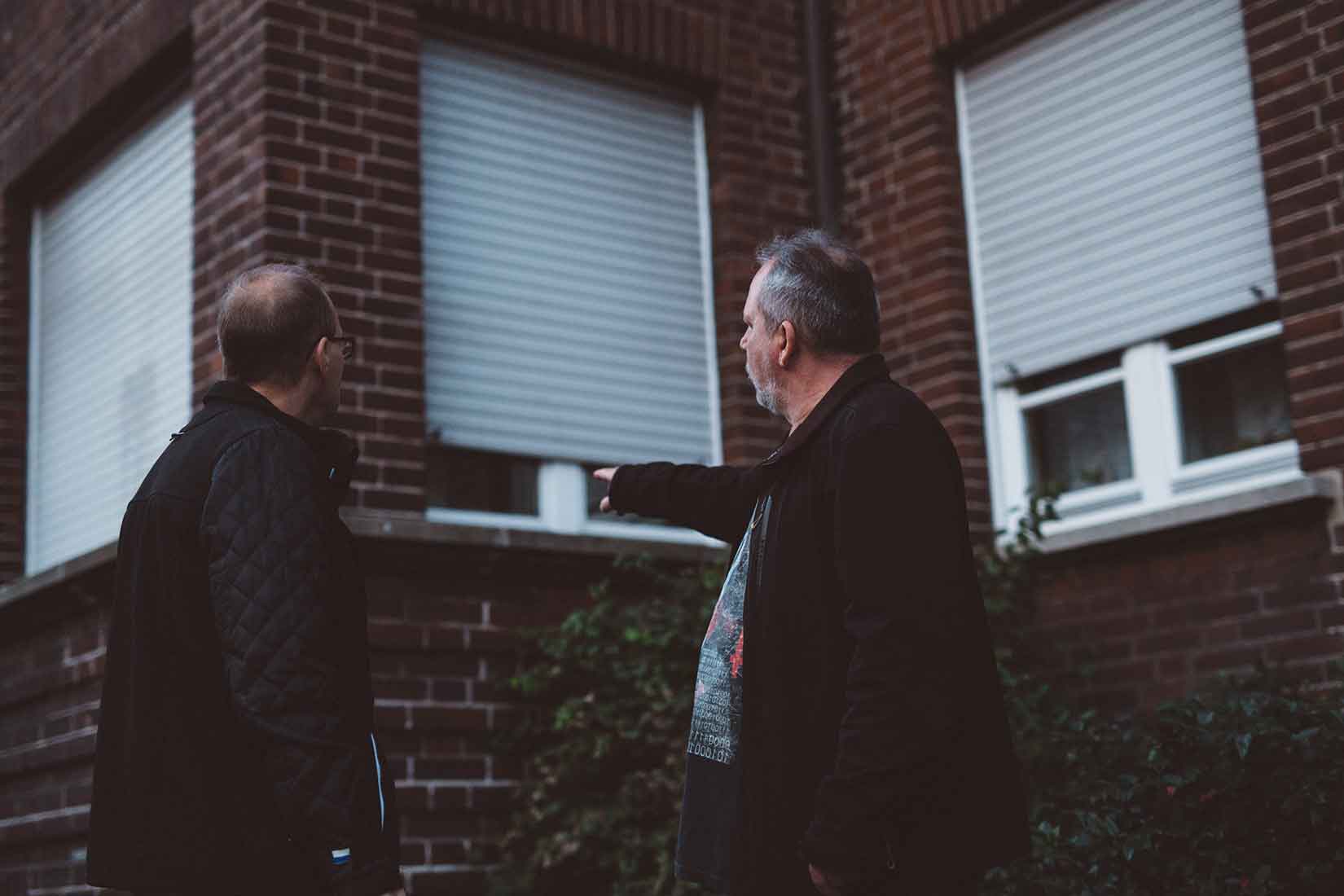
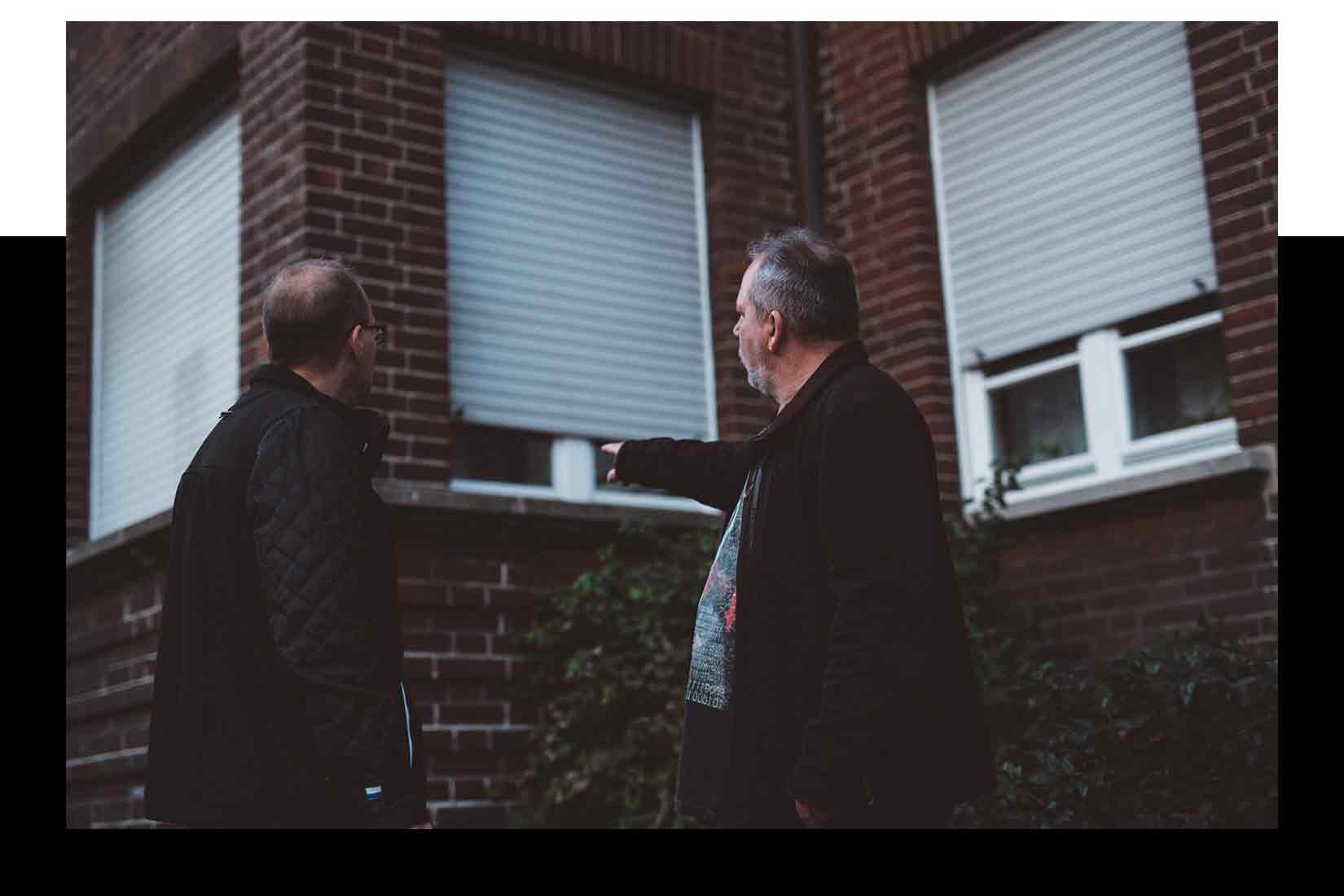
Dirk Bongartz also opened up about his experiences with H. It happened before communion. The chaplain invited him to spend the night, and his mother obliged, sending his older brother and one of his friends along, too. While the older boys slept in their own room, H. wanted to spend the night alone with young Bongartz. The chaplain put on a bathrobe. Finally, he stripped naked and lied down naked with the child.
“I didn’t like it, I didn’t want to,” said Mr. Bongartz, stating that he also said so at the time. It was only because of his brother and his friend in the other room that H. finally stopped and he was able to get out of the situation. “It was an awful night,” Mr. Bongartz said, adding that he has not spoken to anyone about the event – but that at the time, his brother’s expression said: “Now you know what he is.”
The Guardian of Morality
For years, the pattern continued: Peter H. abused young boys with impunity and under the protection of the Church. Through wine and small gifts, he subdued children who, in his role as a priest, he should have protected. When the scandal threatened to blow up, the Church moved H. to a new location.


He had no need to fear punishment. Bishops and cardinals covered for him, always allowing the opportunity to look for new victims.
Even when the abuse scandals surfaced and shook the foundations of the Church, its members did not search for victims on its own initiative. In fact, H. has only been convicted by the Church’s internal court in seven instances – even though they have evidence from 23 people who alleged sexual abuse. In 2020, even the Diocese of Essen and Munich estimate there are 28 victims.
To this day, H. lives as a free man.
As the three men in Bottrop talk about Priest Peter H. at the coffee table, other names come up. Two brothers, also abused. One drank himself to death, the other is in bad shape. So-and-so and what’s his name were also abused by H.
After years of the Church supressing the truth, Elstner wants justice. He has retained an attorney and is fighting for damages. So far, he has received 9,000 euros. But Mr. Elstner wants more. His attorney, Andreas Schulz, considers that the Church, with its constant denial and cover-ups, is to blame for the life-long mental devastation of his client. The attorney believes this also applies to others who have suffered because of the Church’s inaction. He is demanding 500,000 euros from the Church, and that statute of limitations for child abuse be suspended. He said that the fate of his client shows that “children repress this and only become aware of what was done to them much later, by means of painful therapy sessions.” It is not admissible that this should act as protection for perpetrators.
“For responsible individuals in the dioceses, it has been clear for years that H. was abusing boys indiscriminately,” said attorney Schulz. The case shows the whole “entanglement of the Church” up to Pope Emeritus Benedict. Firstly, Ratzinger was archbishop when an abuser came from Essen to Munich and was allowed to continue to work in parishes. Secondly, a confidant of Ratzinger leads a parish together with H., after the conviction of the latter, even though he knew of the risk. And in 2000 Ratzinger even stood on H.’s doorstep in Garching.
“The Church has done nothing for decades to protect the children. It has hidden these things and hushed them up and, from my client’s perspective, acted like a pedocriminal association,” Schulz said.
Mr. Elstner puts it even more clearly: “For me, the Church is an institution in which pedophiles have been protected.”
This text was updated on February, 19, 2020 to add new statements from the diocese of Munich and Pope Emeritus Benedict XVI.
If this story has moved you because of your own experiences with the Church, know that our investigation into the abuses of Priest H. continues. If you know H., be it from Bottrop, Essen, Munich, Grafing, Garching, Engelsberg or Bad Tölz, please contact us. Every lead is valuable. We treat all communication as confidentially. You can contact Marcus Bensmann at marcus.bensmann@correctiv.org or use our anonymous mailbox.
Victims of sexual abuse or their relatives in need of help or advice in Germany can call the free number +49 (0)800-2255530 to get information about therapies and legal tools.
This investigation has been
made possible by our
supporters.
Donate now to support independent,
investigative journalism.
Get on the list
Reporting by: Marcus Bensmann, Michael Haselrieder, Anne Herzlieb Editorial: Olaya Argüeso, Justus von Daniels, Michel Penke Text: Marcus Bensman Pictures: Ivo Mayr Design: Benjamin Schubert, Belén Ríos Falcón Translation: Max Donnheiser
Published: February 26, 2020

